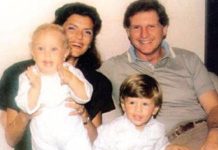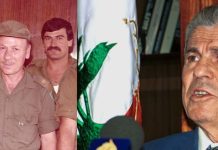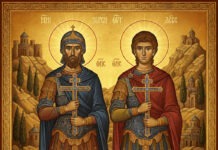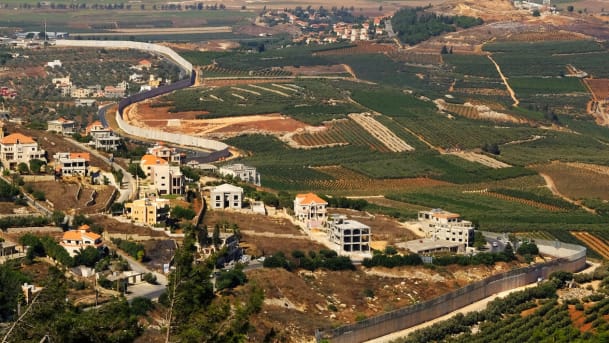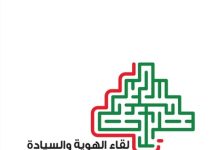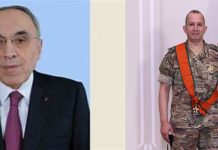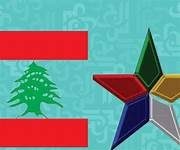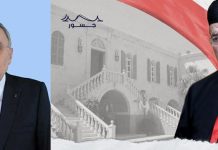Tanks and Tourists on the Israel-Lebanon Border: The Epicenter of the War That Wasn’t
جدعون ليفي وأليكس ليفاك/هآرتس: الدبابات والسياح على الحدود الإسرائيلية اللبنانية هي بؤرة ومركز الحرب التي لم تقع
Gideon Levy and Alex Levac/Haaretz/September 06/2019
A tour of the north on the day after the exchange of fire between Hezbollah and Israel.
At 6, after the almost-war, as the saying (almost) goes, some dusty Armored Corps soldiers were sitting in a small, blue tent next to three tanks, which were parked behind a water reservoir near Moshav Avivim on the Lebanon border, awaiting developments. They wore overalls, indicating that they were on high alert. A few hours earlier, two antitank missiles fired by Hezbollah had fallen a few hundred meters from them, leaving scorch marks on the new northern road; from their position, the soldiers had apparently fired back.
Three tank crews – two from the regular army, one made up of reservists – all under the command of Shlomo, a mechanical engineering student at Ariel University and a resident of that urban West Bank settlement. Affable and obliging, he’s nevertheless appalled by the sudden appearance of two uninvited guests on his battlefield; he was especially worried about his tank being photographed. It’s dangerous to follow the dirt path up to the hilltop, Shlomo said, but he didn’t keep us from doing just that.
The almost-war was over. Soldiers from the Military Police who had erected roadblocks at entrances and exits from the northern road, both the old one and the new, also knew that the almost-war had ended. In a rare spectacle here, they were now preventing military vehicles from using the roads – so, instead of a “closed military zone,” this was a sort of closed civilian zone. The Israel Defense Forces apparently has full confidence in Hezbollah leader Hassan Nasrallah, who from the start of this bout of rising tensions, threatened to attack only military targets. As is also the case for the first few hours after every virtually every cease-fire arrangement on the Israel-Gaza Strip border, the IDF has faith that its enemies will in fact hold their fire. To the point where it’s impossible to escape the impression that everything here has actually been staged. In addition to the mannequins in the jeeps, whose photos were published in Lebanese media, and the fake evacuation of wounded soldiers that Israel acknowledged this week, much more is synchronized and coordinated between Israel and Hezbollah, ostensibly Israel’s great enemy. Maybe it’s all a play, with a beginning, a middle and an end, with all parts clear and predictable.
By the time of our visit on Monday, Shlomo’s tank crews had been up here a week already, between Kibbutz Yiron’s pasture land and Hezbollah’s Yarine, the Lebanese village across the way. The appearance of the villages in the southern part of Lebanon has altered in recent years. A quick glance across the border reveals more elegant homes, and fewer people wandering between them. Not long ago, the IDF brigade commander of this sector explained to locals that the culture of red-tiled roofs in Adaisseh, the neighboring Lebanese village, attests to the Iranian architecture that now dominates there. Everything here is very close: the groves, the fields, the homes and the flags – of Lebanon and Hezbollah on one side, of Israel and army units on the other side.
A strange-looking military jeep, packed with mysterious surveillance equipment, emerges from Moshav Avivim. In the lot next to the secretariat building, farmers’ cars and soldiers’ vehicles are parked together – but, as we know, only Hezbollah hides amid civilian populations.
“Fighting for our livelihood and saving our home,” a sign posted by Tzomet, the “settlement and agriculture party,” which is running in the election, promises at the entrance to Avivim. Its logo, a hand gripping a sheaf of wheat, evokes days of yore. You have to go to the end of the country to discover that an agrarian party is running in this campaign. There’s also a ubiquitous “Nach, nach, Nachman from Uman” poster, and signs advertising a locksmith and a door manufacturer. A young mother is carrying her baby in a sling across the semi-military parking lot of her moshav. A tractor approaches, an ambulance parks. There is a mikveh (ritual bath) and a beit midrash, a Jewish religious study center, with the blessed help of God. Khaled Assadi is at work with a Bobcat compact excavator. An abandoned playground in the sand. Moshav Avivim. The northern border.
There’s Harimon (pomegranate) Street and Hazayit (olive) Street, like in every Israeli suburb. The almost-war is almost no longer felt in Avivim, the site of a massacre by terrorists that killed 12 on a school bus in 1970.
“Welcome to Battalion HQ Avivim, Baram Formation,” reads the sign at the entrance to the base at the foot of the moshav. In its center is a British fortress-turned-Israeli stronghold. The red and black flag of the Artillery Corps is waving in the breeze. Next to the sign for the pizzeria are a few foreign television correspondents, ready to dispatch a last report from the battlefield that wasn’t.
The fields of Lebanon near the border that were burning the day before our visit rise, blackened, across the fence, just meters away; only a few rows of young peach trees and a fence separate the bus station at the Avivim junction from the field of fire. Buses No. 178 to Jish and No. 43 to Safed pass by here a few times a day. Labor-Gesher is the winner on this border road, when it comes to the presence of campaign posters. “Human beings ahead of everything” – Amir Peretz, Orli Levi-Abekasis and Itzik Shmuli at the edge of Hezbollah country. The roads are deserted. A couple from Mitzpeh Abirim has arrived in their Renault to see the remains of the war.
On the seventh day following the death of our beloved Senior Staff Sgt. Maj. Avishai Biton, there will be a Torah lesson for the elevation of his soul, evening prayers and meal, reads the fresh mourning notice affixed to the concrete wall of the old bus stop. Opposite it is a monument commemorating Amnon Bar Ner, who fell here in the month of Av in the Hebrew year 5730 (1970).
The head of the Merom Hagalil Regional Council, Amir Sofer, is speaking into the camera of some television team about the lack of bomb shelters in the area. The letters “U.N.” are written in white stones on the hill across the way, above a base of UNIFIL, the United Nations Interim Force in Lebanon. A white helicopter of the peace army hovers in the sky. The village of Maroun al-Ras is visible on the hill opposite, with a row of buildings that look like hotels or alluring resorts. There’s a Lebanese flag that’s torn in the middle, exactly where the cedar is supposed to be, and the yellow flag of Hezbollah fluttering next to it, a few dozen meters from the IDF’s Tzurit outpost, which also looks deserted. Israeli kiwi is growing in the valley.
A rock wrapped in an Israeli flag constitutes yet another monument on this blood-drenched border – this one in memory of Col. Yitzhak Rahimov, “a good man, friend and commander,” who fell in a 1990 battle “with terrorists” in the village of Yarine, which is visible behind the monument. A cool wind blowing from the Lebanese heights tempers the early-September heat slightly. “He fell in our war for life,” is also part of the inscription on the monument for all eternity, like the fir trees planted alongside it.
Ofer Moskowitz, aka Poshko, is waiting at the relatively new visitors center at Kibbutz Misgav Am; he’s the kibbutz spokesman. The center has a souvenir shop and a smallish lecture hall, with large windows looking out onto the Lebanese landscape. From here Adaisseh looks more like a Swiss hamlet than a Shi’ite stronghold. There are just a few dozen meters and a narrow valley separating the kibbutz homes and that village – stretch out your hand and you can almost touch them. In the past, until the first Lebanon War, in 1982, the local folk on both sides of the border were on friendly terms, visiting one another. Better a close neighbor than a distant brother – but no longer.
At present Israel is building a monstrous concrete wall, yet another concrete wall, that will separate the two communities, the Israeli and the Lebanese. It will ultimately cut across the land from Mount Hermon in the east to the Mediterranean, and will encircle Israel from the north, too. It will be a sister to all the fences and barriers with which Israel has been surrounding itself in recent years. A wound in the landscape, it recalls the separation walls in the West Bank and on the Gaza Strip border. The work is at its height.
The Beaufort castle peaks out from behind the hill to the north, on whose summit is Nabi al-Awadi, which, I’m told, some Jews consider to be the grave of the prophet Obadiah. Why not? The IDF has been perched on this ridge for years. In the past few days, a new flag, colored crimson, has been flying across from Misgav Am; no one here knows what it symbolizes and whom it represents. Opposite it are the flags of Israel and Germany, above the kibbutz visitors center. A group of German tourists is scheduled to come here today.
In the souvenir shop the kibbutz is selling the finest in Israeli fashion: T-shirts emblazoned with symbols of the IDF, the Mossad, the air force, Krav Maga, and slogans like “My Golani” and “Follow me to the Paratroops.” There’s even one that reads “Guns and Moses,” a local joke.
A white bus winds its way mutely up the hill. War or not, Israel’s friends are here. A group of young Germans, from an organization called Israel Contact. Dutch-born kibbutznik Joseph Abas welcomes them in the visitors center, speaking German with an unmistakable Dutch accent. Is Mount Hermon, to the right, the highest mountain in Israel? For now, Abas replies. After a brief survey of the area, he describes in detail the terrors of that night in 1980 when terrorists entered the children’s houses on the kibbutz in an attempt to take hostages.
The young Germans sigh, groan and chuckle after almost every sentence. Well, this is why they’ve come, to see the never-ending suffering of the Jewish people and atone for the guilt of their forebears. Abas’ cellphone rings a lot; his ringtone is “When the Saints Go Marching In.” He doesn’t know how to mute it. The terrorists enter the infants’ house, when the saints go marching in. And then they killed an infant, when the saints go marching in. And by the way the kibbutz also grows excellent avocado, most of it for export.
“What you hear at home in Germany is not exactly what is really happening,” the explainer explains. Questions: Are there also normal people living in the Lebanese village opposite? What have the last few days been like? What means does the IDF use against the terrorists? How do you know they won’t shoot again? That last question was asked by a young German man who is already wearing an IDF T-shirt. From here they are supposed to go on to meet some soldiers. Onward and upward, Israel.
“And I will make of thee a great nation, and I will bless thee and make thy name great.” The flag of the State of Oregon and signs with bombastic biblical quotations below the visitors center lead to a firing post that’s been converted into a small house of worship, or a meditation temple. Peter Page, a kibbutz volunteer from Oregon, is in charge of this house of prayer. Every morning he hoists the flag of Oregon and every evening he lowers and removes it from the pole, before the astonished eyes of Hezbollah across the way. A South African native who fought in the Rhodesian army (don’t even think of saying Zimbabwe when he’s in hearing range or he’ll “Wash your mouth out with soap”), Page is here on a three-month mission with his Spanish wife, Ruth Abigail. The two are members of a Christian organization from Oregon called Zechariah’s Hope, whose goal is to paint bomb shelters – bunkers, in their lingo – in Kiryat Shmona. The symbol of the organization created wholly in order to aid Israel, is a paint brush that appears on Peter and Ruth Abigail’s T-shirts. “It’s a privilege for us to paint bunkers in Kiryat Shmona,” Peter says emotionally. He admires Israel for its courage and its innovation; there are so many adjectives one could apply to the country, he adds.
And suddenly everything gets foggy and mixed up in a jumble – the flag of Oregon, the visitors from Germany, the tanks, the tank crew of Shlomo from Ariel, the kiwi grove and the Hezbollah flag just across the way. To think that just yesterday a war almost broke out here.




